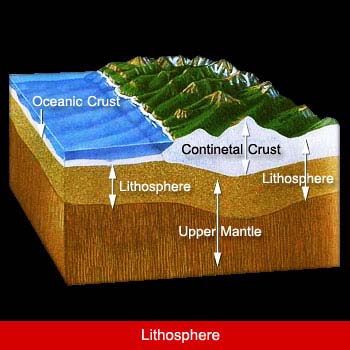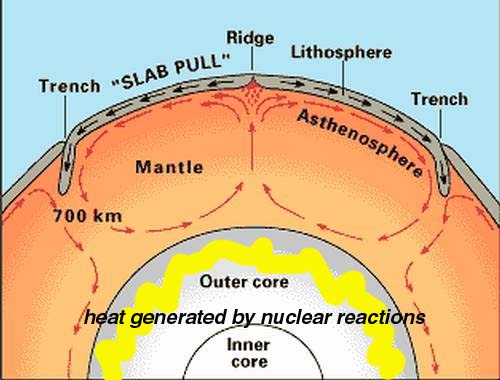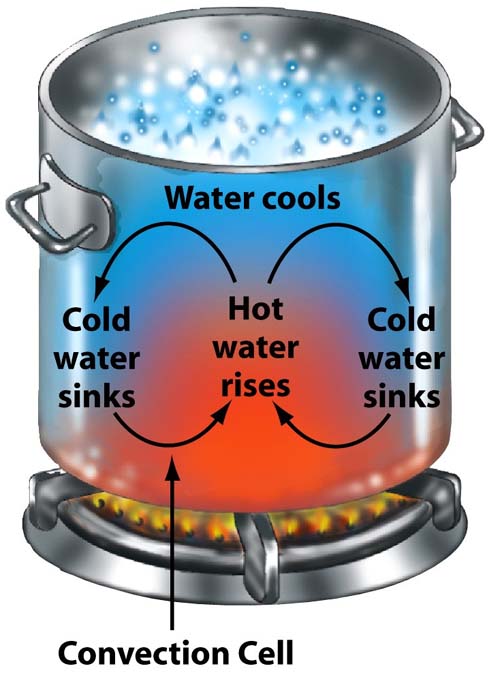Plate Tectonics and the Scientific Method
| According to the theory of plate tectonics, the outer part of the Earth is a layer of rock about 100 kilometers thick. This shell is very thin compared to the size of the Earth. |
 |
| This shell is divided into at least 25 pieces, which are called plates. These plates move very slowing on the partially molten Earth layer (asthenosphere) below them. |
 |
|
The
lithosphere is rigid solid rock. Beneath it is a softer, hotter layer
of solid rock called the asthenosphere. Because of the high temepratures
the rock of the asthenosphere behaves in a plastic way. In effect, the
lithosphere floats on the asthenosphere "carrying" the lithospheric
plates that are constantly changing position.
|
 |
| In 1929, about the time Wegener's ideas began to be dismissed, Arthur Holmes elaborated on one of Wegener's many hypotheses; the idea that the mantle undergoes thermal convection. |
 |
| This idea is based on the fact that as a substance is heated its density decreases and rises to the surface until it is cooled and sinks again. |
 |
| This repeated heating and cooling results in a current which may be enough to cause continents to move. |
 |
 |
 |
 |
Brooklyn College - Geology Department